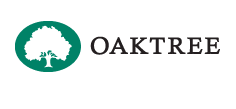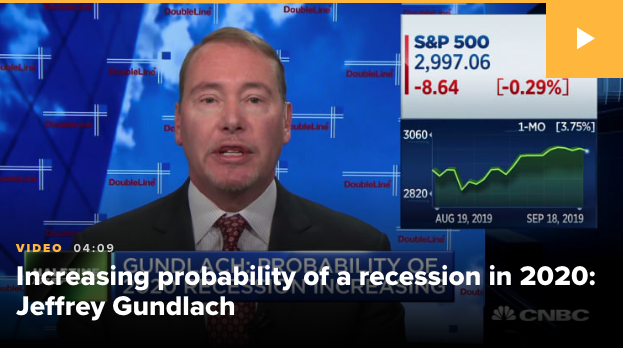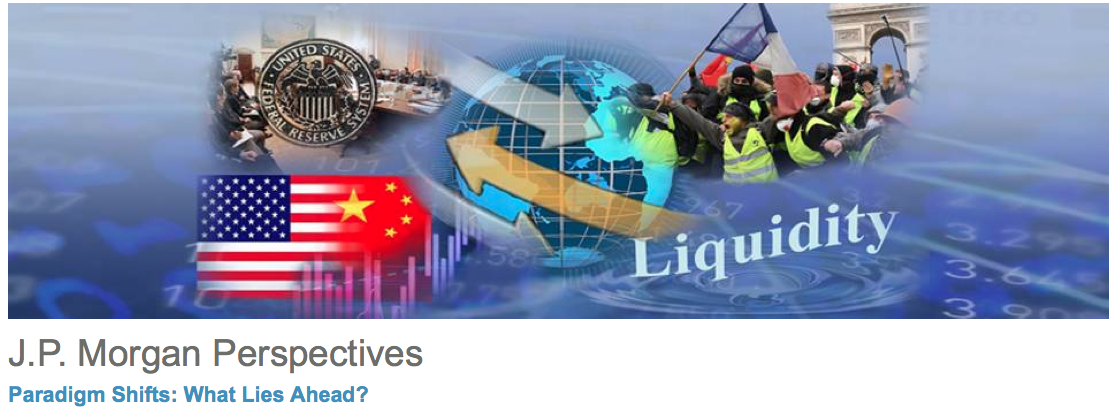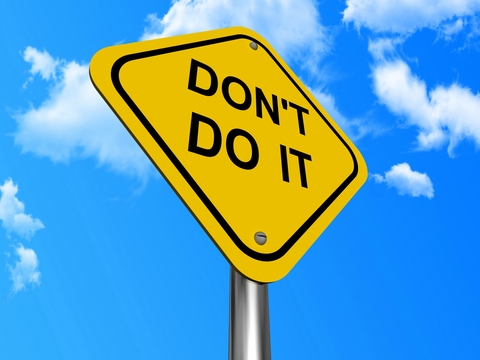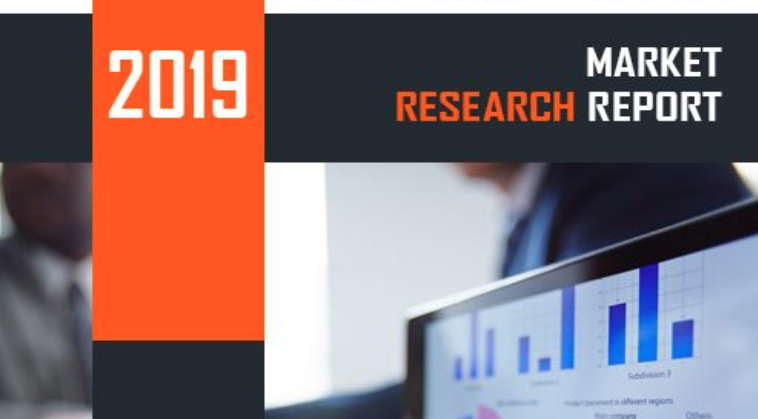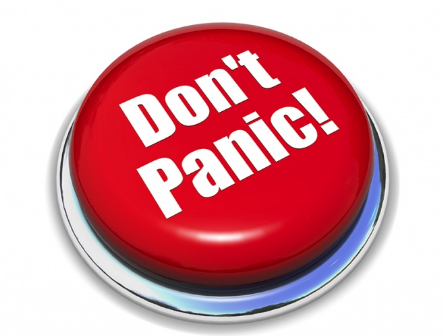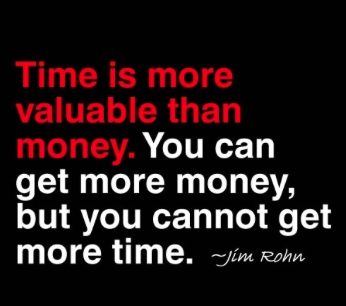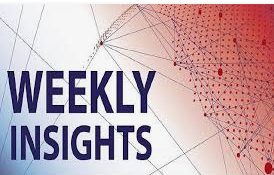Howard Stanley Marks (born April 23, 1946) is an American investor and writer. He is the co-founder and co-chairman of Oaktree Capital Management, the largest investor in distressed securities worldwide. In 2019, with a net worth of $2.2 billion, Marks was ranked 370th on the Forbes 400 rankings of the wealthiest Americans.
Marks is admired in the investment community for his “memos”, which detail his investment strategies and insight into the economy and are posted publicly on the Oaktree website. He has also published 3 books on investing.According to Warren Buffett, “When I see memos from Howard Marks in my mail, they’re the first thing I open and read. I always learn something, and that goes double for his book.
In the last six weeks the markets have seen the best of times and the worst of times:
- From February 19 to March 23, the U.S. stock market saw the quickest meltdown in history, for a loss of 33.9% on the S&P 500. Then its 17.5% gain from Tuesday through Thursday of last week made for the best three-day stretch since the 1930s.
- Of the 21 trading days between February 27 and March 27, a total of 18 days saw moves in the S&P 500 of more than 2%: eleven down and seven up. They included the biggest daily percentage gain since 1933 and the second-biggest percentage loss since 1940 (exceeded only by Black Monday in 1987).
- From March 9 through March 20, issuing a new investment grade bond seemed inconceivable. Then, as our trader Justin Quaglia points out, last week’s news of the government’s rescue package enabled 49 companies to issue $107 billion of IG bonds.That made it the biggest week for issuance on record; part of the biggest month on record ($213 billion from 106 issuers); and part of the biggest quarter on record ($473 billion, up 40% from the first quarter of 2019). In fact, there was more issuance last week than in nine of the 12 months in 2019.
- Finally, on March 26, Justin wrote, “It’s hard to believe I used the words ‘panic’ and ‘FOMO’ within two weeks of each other.”
Looking at the above, it’s important to note the degree to which people (and thus markets) seem to think long-term phenomena can change in the short run.
It’s common knowledge that the coronavirus is still gaining ground in the U.S. and elsewhere; the economy is destined for a serious recession; leveraged entities have to worry about their sources of loans and liquidity; and the price of oil is among the very lowest since the 1973 OPEC embargo. But the prices of financial assets have moved down as well: appropriately, too much or too little? In other words, we have to consider the outlook and the appropriateness of value, in the context of unprecedented uncertainty and the total absence of guidance from analogies to the past.
There’s no doubt about the ability of the government’s and the Fed’s massive cash injections to make things better in the short run, and certainly the market has treated them as sure winners. But I think it’s important to take time out for a serious discussion of possible scenarios. Are this past week’s remedies certain to work? Are the prior week’s negatives really erased? Which will win in the short and intermediate term: the disease, economic ramifications or Fed/Treasury actions? To try to think about these things in a responsible way, I’ve decided to try cataloging the optimistic and pessimistic elements.
The Positive Case
No one thinks things are good right now, but the optimist’s view is built around the early cessation of bad news and the arrival of better news in the not-too-distant future. Here are the components. (As you know, I usually avoid using macro forecasts and never make my own. I will borrow from others for the purposes of exposition in this memo, but not because I have reason to believe they’re correct):
- The earliest countries to contract the virus have shown good progress. The reported data on their new cases has flattened, and in South Korea, more people are being released from the hospitals than are entering. Hermann Dambach, head of our Frankfurt office, reports that the numbers are improving in Italy, Germany and Austria.
- Every forecast I’ve seen assumes the virus will be brought under control within three months or so. The curve is flattened and then turned downward. The virus is contained and then eliminated.
- Testing identifies those infected, and isolation/quarantine keeps them from infecting others.
- Herd immunity develops, reducing the number of people capable of transmitting the disease.
- Warmer weather causes the disease to recede.
- Treatments are found that aid recovery.
- A vaccine is developed.
- The negative impact of the disease on the economy will be sharp but brief. The term “V-shaped” dominates most forecasts, both between Q2 and H2 and between 2020 and 2021. Thus, for example, one forecaster who has the earnings of the S&P 500 companies down 120% in Q2 thinks they may rise roughly 80+% in Q3 on a quarter-over-quarter basis (that is, to down just 20% from 2019) and then rise by a further 50% in Q4. And after a decline of 33% in 2020, earnings will rise by 55% in 2021 and exceed what they were in 2019.
- Telling people to stay home – and thus causing businesses to close – is the economic equivalent of putting a patient into a coma to facilitate curing a serious disease. The government will provide life support to the economy during the coma and bring the patient out of the coma after the cure has been effected. The economic recovery will be abetted by better news about the disease, but the improvement will mainly be the result of the success of the Fed/Treasury package of rescue and stimulus. These organizations have announced unprecedented expenditures and have indicated that they’ll do whatever else it takes. Actions that were taken after months of deliberation in the Global Financial Crisis have been rolled out in the early weeks of the current episode. Further steps are likely to include everything anyone can think of and be unconstrained as to amount.
- The banks are much less vulnerable than they were during the Global Financial Crisis, with only a third of the leverage.Thus concerns for the health of the overall financial system are greatly reduced.
- The U.S.’s effective private sector will supplement the public health efforts of government, producing massive amounts of supplies and equipment, and developing testing, treatments and vaccines.
- The price declines of securities will draw in buyers, and ample capital is available in the form of dry powder in funds.
When I read the more positive views regarding the current episode, I can’t help but think back to my favorite newspaper headline, which included the phrase “Bankers Optimistic.” Usually the case, perhaps, but it’s worth noting that the story in question was published on October 30, 1929, reporting on the prior day’s stock market crash. On that day of optimism, the Great Depression still had eleven years to run.
The Negative Case
I always say we have to be aware of and open about our biases. I admit to mine: I’m more of a worrier than a dreamer. Maybe that’s what made me a better credit analyst than equity analyst. On average I may have been more defensive than was necessary (although somehow I was able to shift to aggressive action when crisis lows were reached during my career). Thus it shouldn’t come as a surprise today that my list of cons is longer than my pros (and I will elaborate on them at greater length).
- I’m very worried about the outlook for the disease, especially in the U.S. For a long time, the response consisted of suggestions or advice, not orders and rules. I was particularly troubled last weekend by pictures of college kids on the beach during spring break, from which they would return to their communities. The success of other countries in slowing the disease has been a function of widespread social distancing, testing and temperature-taking to identify those who are infected, and quarantining them from everyone else. The U.S. is behind in all these regards. Testing is rarely available, mass temperature-taking is non-existent, and people wonder whether large-scale quarantining is legal.
- The total number of cases in the U.S. has surpassed both China’s and Italy’s and is still rising rapidly (and is likely understated due to under-testing).
- The number of deaths doubled from 1,000 to 2,000 between Thursday and Saturday.
- From a recent tweet by Scott Gottlieb, MD, former commissioner of the FDA: “I’m worried about emerging situations in New Orleans, Dallas, Atlanta, Miami, Detroit, Chicago, Philadelphia, among others. In China no province outside Hubei ever had more than 1,500 cases. In U.S. 11 states already hit that total. Our epidemic is likely to be national in scope.”
- The U.S. is under-equipped to respond in terms of hospitals, beds, ventilators and supplies. Under-protected doctors, nurses and first responders are at risk. I’m concerned that the number of cases and deaths will continue to rise as long as we fail to emulate the successful countries’ actions. The health system will be overwhelmed. Triage decisions – including who lives and who dies – will have to be made. There will be a point where there doesn’t seem to be an end in sight. I’m afraid the headlines are going to get much uglier in this regard.
- The economy will contract at a record rate. Many millions will be thrown out of work. People will be unable to patronize businesses. Not only will workers miss paychecks and businesses miss revenues, but businesses’ physical output will tail off, meaning essentials like food may run short. Last week, 3.3 million new unemployment claims were filed, versus the previous week’s 282,000 and the weekly record of 695,000. Prior to the government’s actions, expectations included the following:
- unemployment would return to 8-10%, and citizens would soon run short of cash;
- businesses would close;
- second-quarter GDP would decline from the year-ago level by 15-30% (versus a decline of 10% in the first quarter of 1958, the worst quarter in history);
- some forecasters said the combined earnings of the S&P 500 companies would decline 10% in the second quarter, but that seems like a ridiculously small decline. At the other end of the spectrum, I’ve seen a prediction that S&P earnings would decline by 120% (that’s right: in total, the 500 companies would shift from profits to losses). Government payments plus augmented unemployment insurance will replace paychecks for many workers, and aid to businesses will replace some of their lost revenues. But how long will it take to get these funds to recipients? How many should-be recipients will be missed? For how long will the aid continue? ($3,400 to a family of four won’t last long.) What will it take to bring the economy back to life after it’s been in a deep freeze? How fast will it recover? In other words, is a V-shaped recovery a realistic expectation?
- It will be very challenging to resolve the conflict between social isolation and economic recovery. How will we know whether the disease merits the cure? The longer people remain at home, the more difficult it will be to bring the economy back to life. But the sooner they return to work and other activities, the harder it will be to get the disease under control. First, the growth in the number of new cases each day has to be reduced. Next, the number of new cases has to begin to decline from one day to the next (that is, the growth rate has to turn negative). Then new cases have to stop appearing each day. (Of course, we’ll need increased testing and mandatory quarantining for these things to occur.) As long as there are new cases each day, there are people who are infectious. If we send them back into the world and into contact with others, the disease will persist and spread. And if we seize the opportunity provided by a decline in the number of new cases to resume economic activity, we risk a rebound in the rate of infection.
- For the most part, we have companies whose revenues are down and companies whose revenues are gone. They can reduce their expenses, but because many of them are fixed (like rent), they can’t reduce expenses as fast as revenues decline. That’s why second-quarter profits will shrink, dry up or turn negative. Revenues may come back relatively soon for some industries (like entertainment), but less rapidly for others (like cruise lines).
- Many companies went into this episode highly leveraged. Managements took advantage of the low interest rates and generous capital market to issue debt, and some did stock buybacks, reducing their share count and increasing their earnings per share (and perhaps their executive compensation). The result of either or both is to increase the ratio of debt to equity. The more debt a company has relative to its equity, the higher the return on equity will be in good times . . . but also the lower the return on equity (or the larger the losses) in bad times, and the less likely it is to survive tough times. Corporate leverage complicates the issue of lost revenues and profits. Thus we expect to see rising defaults in the months ahead.
- Likewise, in recent years, the generous capital market conditions and the search for return in a low-interest-rate world caused the formation of leveraged investment entities. As with leveraged companies, debt increased their expected returns but also their vulnerability. Thus I believe we’re likely to see defaults on the part of leveraged entities, based on price markdowns, ratings downgrades and perhaps defaults on their portfolio assets; increased “haircuts” on the part of lenders (i.e., reduced amounts loaned against a dollar of collateral); and margin calls, portfolio liquidations and forced selling. In the Global Financial Crisis, leveraged investment vehicles like Collateralized Mortgage Obligations and Collateralized Debt Obligations melted down, bringing losses to the banks that held their junior debt and equity. The systemic importance of the banks necessitated their bailouts (the resentment of which contributed greatly to today’s populism). This time, leveraged securitizations are less pervasive in the financial system, and their risk capital wasn’t supplied by banks (thanks to the Volcker Rule), but mostly by non-bank lenders and funds. Thus I feel government bailouts are unlikely to be made available to them. (As an aside, it’s not that the people who structured these leveraged entities erred. They merely failed to include an episode like the current one among the scenarios they modeled. How could they? If every business decision had to be made in contemplation of a pandemic, few deals would take place.)
- Finally, in addition to the disease and its economic repercussions, we have one more important element: oil. Due to a confluence of reduced consumption and a price war between Saudi Arabia and Russia, the price of oil has fallen from $61 per barrel at year-end to $19 today. The price of oil was only slightly lower immediately before the OPEC embargo in 1973, and in the 47 years since then it has only been lower on two brief occasions. While many consumers, companies and countries benefit from lower oil prices, there are serious repercussions for others:
- Big losses for oil-producing companies and countries.
- Job losses: the oil and gas industry directly provides more than 5% of American jobs (and more indirectly), and it contributed greatly to the decline of unemployment since the GFC.
- A significant decline in the industry’s capital investment, which recently has accounted for a meaningful share of the U.S.’s total.
- Production cuts, since consumption is down and crude/product storage capacity is running out.
- The damage to oil reservoirs that results when production is reduced or halted.
- A reduction in American oil independence. As recounted above, the negative case encompasses rising numbers of infections and deaths, unbearable strain on the healthcare system, job losses in the many millions, widespread business losses and mounting defaults. If these things arise, investors are likely to shift from the optimism of last week to the pessimism that was prevalent in the rest of March. Contributing factors may include:
- negative psychology surrounding the combination of threats to the economy and life itself,
- fear of more, and
- a very negative wealth effect that depresses spending and investing.
The Government Programs
Last week the government enacted the CARES (Coronavirus Aid, Relief, and Economic Security) Act, with roughly $2 trillion of rescue and support. At the same time, the Fed will spend several trillion more to provide liquidity and buttress the financial system, and it has “committed to using its full range of tools.” I will dispense with listing all the provisions of the CARES Act, and merely note that J.P. Morgan’s description runs to eight pages. And as mentioned above, the list of ingredients and their magnitude are likely to grow.
I’ll share a useful description of the economic situation and the government response from Conrad DeQuadros of Brean Capital, an economist I’ve taken to quoting:
The CARES Act should not be thought of as fiscal stimulus, but as an economic stabilization package. The collapse of economic activity in March 2020 is not a normal cyclical recession but is the result of a mandated “time out” of individuals and businesses by the government. Many of the provisions of the Act are designed to prevent the private sector from unraveling so that when the containment of the virus permits shutdowns to be lifted, activity can bounce back. . . .
There is no avoiding recession because the output of airlines, hotels, restaurants, movie theaters, etc. is lost. However, these programs will support businesses so that when the virus permits the resumption of activity, we can see a sharp rebound in activity. Skilled labor was a scarce resource just one month ago and the key is to keep that labor and businesses connected. The support for businesses is really support for labor because if companies cannot pay workers from cash flows, the layoff figures will dwarf the numbers suggested by the latest jobless claims data.
How effective will the measures be? In the latest quarter, labor compensation was $2.9 trillion (actual, non-annualized) and, to consider a purely illustrative number, a 20% (actual) drop in labor incomes amounts to $577 billion, which is about the magnitude of direct income support to households without considering the impact of support for businesses, which will head off a steeper decline in labor incomes. The fiscal package will unlock upward of $4 trillion of capital market support programs from the Fed. In addition there are the funds to help combat the spread of the virus and the sooner the virus can be contained, the more lives will be saved and the sooner America can get back to work. After a few months of being housebound, we suspect there will be plenty of pent up demand. The fiscal deficit in 2020 could be of the magnitude of $2.5 trillion but if the package fails, the recession would be longer and deeper and the fiscal cost would be greater.
As always, I don’t know which economists are right, but I’m happy to go with Conrad’s summation.
Moving on from understanding the actions to date, I want to talk about the outlook for this effort. The government seems able, as Conrad says, to support and stabilize the economy. In my simplistic view, I imagine it can print enough checks to replace every American worker’s lost wages and every business’s lost revenues. In other words, it can “simulate” the effect of the economy on incomes. But I have two questions: is that okay, and is it enough?
First of all, as I mentioned above, we actually need the output of workers and businesses. If all businesses shut down, we won’t have the things we need. These days, for example, people are counting on grocery deliveries and take-out food. But does anyone wonder where food comes from and how it reaches us? The Treasury can make up for people’s lost wages, but people need the things wages buy. So replacing lost wages and revenues will not be enough for long: the economy has to produce goods and services.
Second, let’s assume the government writes checks to replace wages and revenues forever, and that the economy continues to produce at a minimal but sufficient level, so the things we need materialize. What will be the long-term effect? As with oil reservoirs, what will be the impact of long-term inactivity on the ability of the economy to produce? How long will it take to restart the economy and bring it back to its previous level of functioning?
Lastly, what would be the effect of the Treasury continuing to add trillions of dollars each quarter to the deficit (which was running at $1 trillion even before the virus hit) and of the Fed continuing to pump trillions more into the monetary system? Last June, in my memo This Time It’s Different, I discussed Modern Monetary Theory, which – to simplify – says federal deficits and debt don’t matter. It’s no longer just a theory; we have to deal with its implications now:
- What would be the effect of the above on the value of the dollar, and thus on the dollar’s status as the world’s reserve currency? (Of course, in this environment, other countries are likely to behave much the same as we do, meaning the dollar may not be debased relative to other currencies.)
- Might a reduction of the dollar’s reserve-currency status make it harder for us to finance our deficits and raise the interest rates we have to pay to do so?
- Might money-printing to that degree bring on an increase in inflation?
- Might a supply shock stemming from reduced global output of raw materials and finished goods add to the increase in inflation? The factors that create inflation are truly mysterious, but these certainly seem like reasonable candidates, especially when combined.
Possibly without serious vetting and a conscious decision to adopt it, Modern Monetary Theory is here. Whether we like it or not, we’ll get to see its impact much quicker than I had thought. (And remember, 100% of the “top scholars” polled by The University of Chicago Booth School of Business disagreed with some of MMT’s claims).
Summing Up
Rather than reinvent the wheel – and to show you how others are viewing the situation (albeit in ways that parallel my view) – I’m going to share the workload by recycling the conclusion from a note I received from Jason Klein, CIO of Memorial Sloan Kettering:
The bull case from here seems to be that monetary policy will work, fiscal policy will kick-in, valuations have reset, society will follow effective healthcare policies (e.g., social distancing) that will be effective, the real economy will adapt, and geopolitics will remain subdued. The bear market seems to be the flip side of each issue, and has the potential to be much darker as the prospects of a hot war with China, or even Iran, seem rather ominous. Across all recent events, I find it in some ways most interesting that Saudi Arabia chose to instigate a supply shock targeting U.S. shale at a moment when the demand for U.S. energy was already reeling from the demand-side shock from COVID-19 restrictions. It highlights the unpredictability of events. As you’ve said, nobody knows.
Richard Masson, my Oaktree co-founder and resident scold, might say Twitter isn’t a worthy source, but nevertheless I want to include a concise summary tweeted by @yourMTLbroker:
Bull case: everything opens in 6 weeks. The unemployed can go back to old jobs or as true Americans, bootstrap. Economy back to normal within 6 months. 2T $ in PE dry powder, low gas prices and 0% interest rates pour fuel onto on the economy. The roaring 20’s mean the 2020’s now.
Bear case: Unemployment goes to 20%+. Everything does NOT go back to normal before at least a year or two, and in the meantime, there is a huge demand shock. The effects of the lockdown on businesses as well as the oil shock create depression-like conditions.
In the Global Financial Crisis, I worried about a downward cascade of financial news, and about the implications for the economy of serial bankruptcies among financial institutions. But everyday life was unchanged from what it had been, and there was no obvious threat to life and limb.
Today the range of negative outcomes seems much wider, as described above. Social isolation, disease and death, economic contraction, enormous reliance on government action, and uncertainty about the long-term effects are all with us, and the main questions surround how far they will go.
Nevertheless, the market prices of assets have responded to the events and outlook (in a very micro sense, I feel last week’s bounce reflected too much optimism, but that’s me). I would say assets were priced fairly on Friday for the optimistic case but didn’t give enough scope for the possibility of worsening news. Thus my reaction to all the above is to expect asset prices to decline. You may or may not feel there’s still time to increase defensiveness ahead of potentially negative developments. But the most important thing is to be ready to respond to and take advantage of declines.
The world will be back to normal someday, although today it seems unlikely to end up unchanged. What matters most – in terms of both health and finances – is how we do in the interim. Stay safe!

